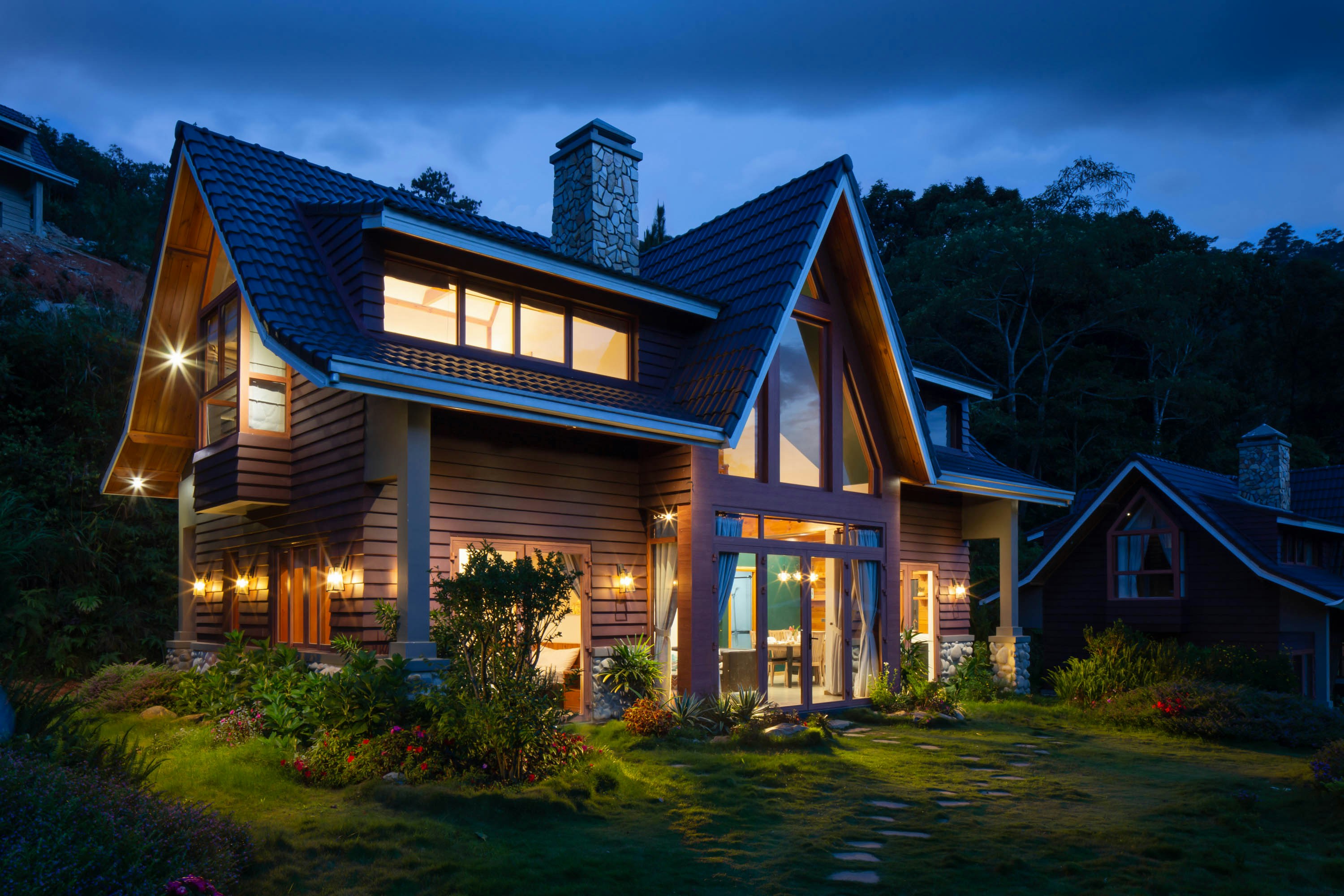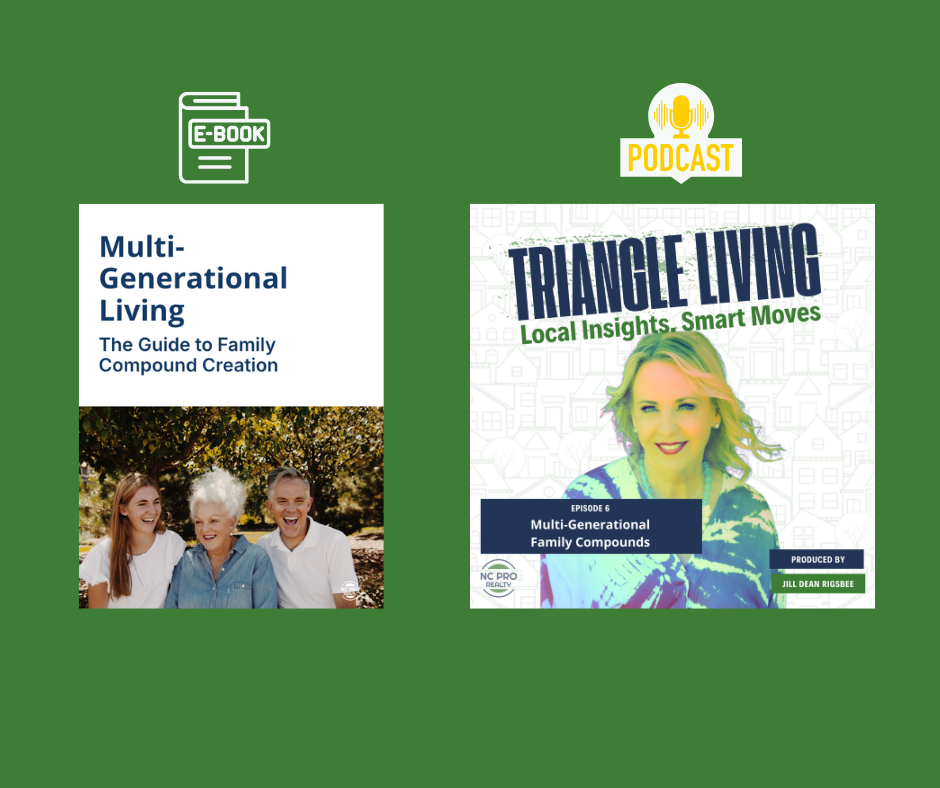Multi-generational living is more than just a rising trend—it’s a lifestyle choice that offers families the chance to stay connected, pool resources, and enjoy the benefits of togetherness while still preserving privacy and independence. In North Carolina’s Triangle region (including Raleigh, Durham, and Chapel Hill) and surrounding areas like Youngsville, Wake Forest, and Rolesville, larger parcels of land are still attainable, making it possible to build the perfect family compound.
So, if you’re wondering how to find the right land, what financing options you have, or even how to handle legalities and zoning, this blog covers all the basics and then some. By the end, you’ll have a better grasp of the process—and a clear path to request our free PDF eBook for even more in-depth guidance!

1. Why Multi-Generational Living Is on the Rise
A Shift Toward Togetherness
Modern families have started recognizing the value of living under one “umbrella.” Whether it’s the grandparents moving closer to help with the grandkids, or siblings looking to share a plot of land to keep kids growing up together, multi-generational compounds allow for a close-knit environment. And with the benefits—financial, emotional, practical—it’s no wonder more folks are exploring this option.
Economic Benefits
Pooling resources might be the biggest motivator. By sharing costs for land, infrastructure, and even common amenities like a pool or playground, individual families can end up paying significantly less than if they each bought separate properties. Plus, having an extra set of helping hands for childcare or eldercare can reduce other day-to-day costs.
The North Carolina Advantage
Why is North Carolina, particularly the Triangle, such a hotspot for multi-generational compounds? It’s simple:
- Job Opportunities & Growth: The Raleigh-Durham-Chapel Hill area consistently ranks among the fastest-growing regions in the country, offering a stable real estate market.
- Diverse Culture & Amenities: Top universities, world-class healthcare, outdoor activities (mountains to the west, beaches to the east)—it’s got something for everyone.
- Available Acreage: While land prices have risen, there are still parcels in the surrounding communities where you can claim enough space for multiple homes.
2. Finding the Right Land
Conducting a Land Search
Your first step should be to partner with a real estate team that knows the local land market in and around the Triangle area. Because not every parcel is created equal, you want to ensure the property you choose:
- Meets Zoning Requirements: Double-check that the land is zoned for residential development and allows for the number of dwellings you have in mind.
- Offers Room for Expansion: Families grow, and needs change. A little extra land provides breathing room to add more structures down the line.
- Includes Access to Utilities: In more rural spots, you may have to consider well water, septic systems, or even hooking up to public utilities, if available.
Location, Location, Location
Selecting acreage near your family’s favorite spots—such as parks, schools, medical facilities, and shopping centers—can make a world of difference in daily life. And if you aim to build a large compound, consider if you want a peaceful setting or something with quicker highway access for commuting.

3. Pooling Resources & Financing Options
Traditional Mortgages vs. Creative Financing
Families looking to build a compound can do so in several ways. Some might secure a single mortgage under multiple names (joint ownership), while others choose to have one party purchase the land and subdivide it later for each family member to finance their own portion.
Here are a few popular approaches:
- Group Mortgage: Everyone’s name goes on the mortgage, and monthly payments are split. Make sure you have a clear contract that details ownership shares and responsibilities.
- Subdivision & Separate Loans: One person (or couple) purchases the land outright, then subdivides and sells each piece to other family members, who then secure their own mortgages. This can simplify each household’s finances but involves a more complex initial process of land subdivision.
- Cash or Private Loans: If one or more family members have substantial capital, the family compound could be purchased with cash, alleviating much of the immediate lending concerns. Still, you’ll want an agreement to outline future resale terms, shared maintenance costs, etc.
Tips for a Smooth Financing Process
- Get Pre-Approved: Encourage all prospective owners to get pre-approved for a mortgage before diving into property shopping.
- Work with a Specialized Lender: Not all lenders are familiar with these types of deals. Find a financial institution or broker that has handled multi-family or land development projects before.
- Plan for Contingencies: Always build a financial cushion into your project. Construction costs can fluctuate, unexpected zoning issues may arise, and you need to ensure the budget can absorb these bumps.
4. Legal Considerations & Zoning
Engaging a Real Estate Attorney
When multiple owners are involved, it’s crucial to work with a knowledgeable real estate attorney who can draft the right documents to protect everyone’s interests. They’ll help with:
- Deeds and Titles: Clarifying how each owner’s name is listed on the property deed.
- Operating Agreements: If you set up a limited liability company (LLC) or other business structure to hold the land, you’ll need a formal agreement that spells out responsibilities and decision-making powers.
- HOA or Covenant Creation: Some families choose to create a small homeowners association or record covenants about things like design standards, shared amenities, or rules for future subdivisions.
Subdivision Regulations
Before you buy, check local government subdivision rules. Some counties impose minimum lot sizes or cap the number of homes you can build on a given parcel. Typically, the process involves:
- Property Survey: A professional surveyor will mark boundaries and confirm the property’s legal description.
- Preliminary Plat Submission: You or your surveyor present a proposed subdivision plan to the county or city.
- Approval & Recording: Once approved, the new lots get recorded at the county’s register of deeds, and each becomes its own property with a unique parcel ID.
5. Designing and Building the Compound
Bringing Your Own Builder(s)
One perk of subdividing a larger property into multiple lots is that each family can select their own builder—assuming there’s no covenant requiring one particular builder. This flexibility allows everyone to enjoy a home that meets their style, budget, and functional needs.
Alternatively, you could opt for one builder or developer who specializes in multi-home projects, potentially streamlining the construction process and aesthetic consistency.
Community Amenities
For a true family compound experience, think about adding shared spaces:
- Clubhouse or Community Room: Perfect for hosting big birthday parties or family reunions.
- Pool or Splash Pad: Great for warm North Carolina summers, but factor in ongoing maintenance and liability.
- Playgrounds & Green Space: A communal area for children to play and adults to gather fosters community spirit.
- Walking Trails & Gardens: Paths that wind through the property can be great for daily walks or even a shared garden plot.
Cost Considerations
Construction costs in the Triangle region typically range between $200 and $300 per square foot, depending on finishes and customization. Don’t forget to budget for:
- Site Work: Clearing land, grading, and preparing for utilities.
- Permits & Inspections: Zoning, environmental regulations, and building code compliance.
- Road & Utility Installation: If you’re creating new roads or hooking up each lot to water, sewer, and electric lines, be prepared for significant infrastructure expenses.

6. Maintaining Privacy and Community
Smart Layout
Striking the balance between communal living and personal space starts with layout. Placing homes around a central courtyard or green space can encourage gathering, while still positioning each structure far enough apart for privacy.
Boundaries and Fencing
Landscaping and fencing options can define personal and shared spaces. Low fences or natural borders like hedges can distinguish each property without completely isolating it.
Establishing Rules (Yes, Even with Family)
Even the closest families benefit from setting down some guidelines about shared amenities, noise levels, parking, and maintenance responsibilities. Trust us—it’s easier to discuss these things up front than to resolve conflicts later.
7. Planning for Future Resale
It might seem counterintuitive to think about selling the property before it’s even built, but life changes happen. Some siblings may want to move later for a job opportunity, or parents might need a different type of care.
To keep your options open:
- Ensure Separate Deeds: Individual lots can be sold independently if the need arises.
- Maintain Proper Utilities: Separate utility meters and connections make a property far more attractive to potential buyers.
- Consistent Documentation: Keep records of any covenants, architectural guidelines, or shared maintenance agreements so they can transfer smoothly to new owners.
8. Why the Triangle & Surrounding Areas Are Perfect
The Triangle’s balanced mix of urban, suburban, and rural areas gives you flexibility. You can find:
- Larger Tracts of Land in outlying communities like Youngsville, Wake Forest, or Rolesville, still within a short drive of Raleigh-Durham’s job centers.
- Ease of Access to highways like I-540 and US-1, which helps family members commute to work or schools.
- Thriving Local Communities with farmers markets, festivals, parks, and cultural events—plenty to do together as a family.
Plus, the Triangle’s consistent population growth has helped ensure that real estate values remain stable or trend upward, making a family compound a potentially solid long-term investment.
9. The Value of Professional Guidance
Real Estate Experts
A specialized real estate team can help you:
- Identify properties suitable for multi-generational living.
- Understand zoning regulations and local subdivision processes.
- Negotiate deals with sellers who might not be familiar with family compound needs.
Attorneys and Surveyors
Every successful multi-generational project involves the behind-the-scenes expertise of surveyors (to confirm legal boundaries and potential subdivisions) and attorneys (to draft ownership agreements that protect everyone).
Builders and Contractors
Working with builders who have experience in custom home design or multi-home developments can help you navigate everything from site prep to final inspections.

10. Next Steps: Start Planning Your Dream Compound
-
Gather Your Team
- Bring all interested family members together for a frank discussion about finances, layout preferences, and future goals.
- Hire a real estate professional who understands the complexities of multi-family purchases and land development.
-
Begin Your Property Search
- Focus on areas known for larger parcels of land.
- Ask about zoning designations, HOA restrictions, or any special county/city regulations.
-
Map Out Your Budget
- Estimate costs for land, construction, infrastructure, and a contingency fund.
- Explore financing options (single mortgage vs. individual).
-
Sketch Your Dream Layout
- Envision each home’s location, shared spaces, and possible expansions.
- Factor in privacy, accessibility, and potential resale.
-
Build In Flexibility
- Times change, families evolve. Leave room for extra parking, an in-law suite, or even a separate dwelling down the line.
11. Ready for More In-Depth Info? Request Our Free eBook and Listen to the Family Compound Podcast : LINK FOR MORE INFO
If you’re feeling excited about the idea of creating a multi-generational family compound, there’s plenty more to learn. Our comprehensive PDF eBook dives deeper into the details of financing options, subdividing land, working with local agencies, and designing the perfect shared amenities.
No obligation—just good, solid information to help you on your journey.
Email us at info@ncprorealty.com to request your copy of the eBook. You’ll receive:
- Extended checklists for land, financing, and construction
- Sample subdivision layouts
- Real-life success stories
- Pro tips on everything from loan negotiations to environmental considerations
Conclusion
A multi-generational family compound is more than just a housing arrangement; it’s a lifestyle choice that brings loved ones closer, fostering daily connections and lifelong memories. With the right planning, the right team, and the right location in North Carolina’s thriving Triangle region, you can transform this vision into a reality.
Don’t forget: If you’re eager for even more guidance, email us at info@ncprorealty.com to get your free PDF eBook. You’ll find a wealth of knowledge inside, from zoning details to construction best practices—making your path to multi-generational living smoother and more enjoyable.
Start building the life your family deserves, right here in the heart of North Carolina. The opportunities are endless, and the memories waiting to be made are priceless. Let’s make it happen!




